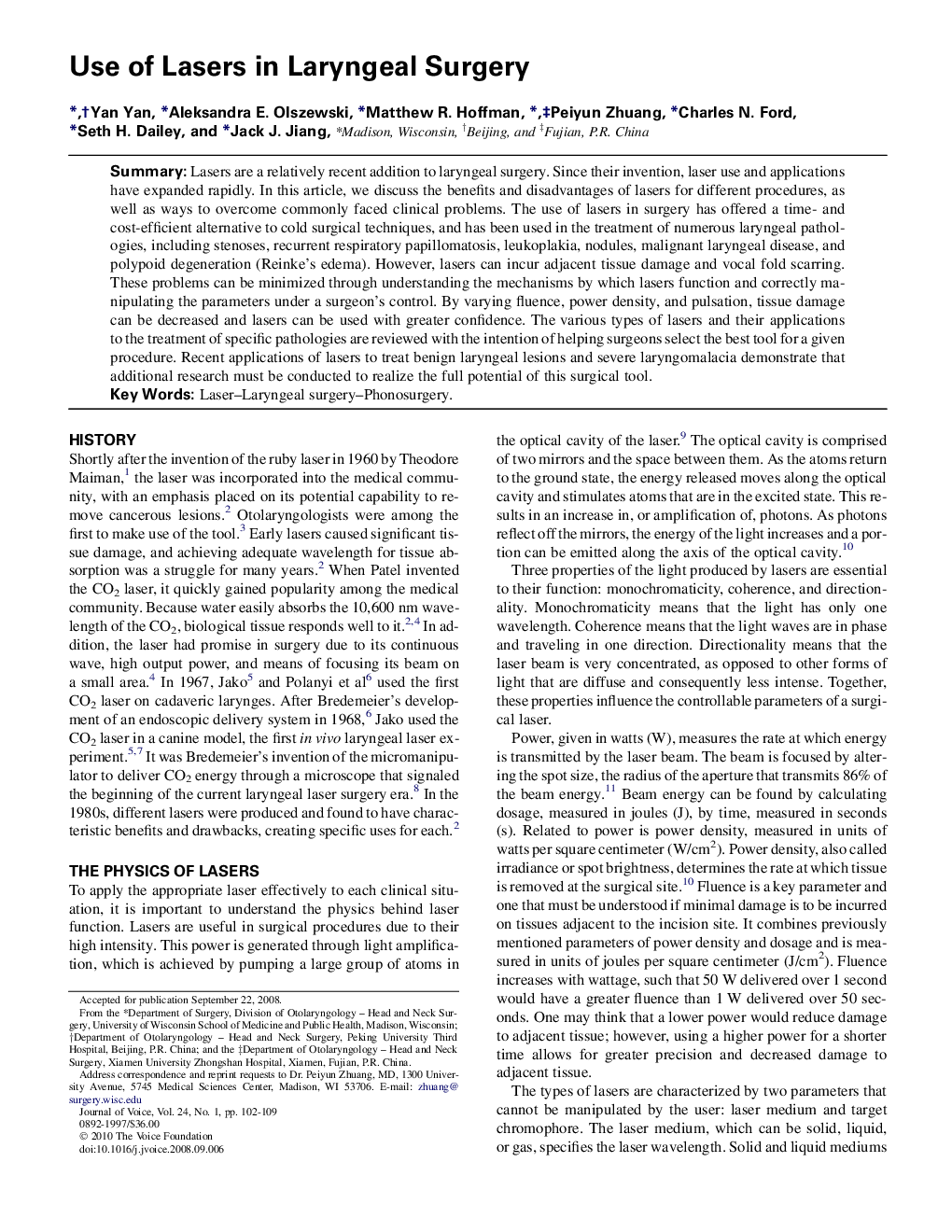| Article ID | Journal | Published Year | Pages | File Type |
|---|---|---|---|---|
| 1102057 | Journal of Voice | 2010 | 8 Pages |
SummaryLasers are a relatively recent addition to laryngeal surgery. Since their invention, laser use and applications have expanded rapidly. In this article, we discuss the benefits and disadvantages of lasers for different procedures, as well as ways to overcome commonly faced clinical problems. The use of lasers in surgery has offered a time- and cost-efficient alternative to cold surgical techniques, and has been used in the treatment of numerous laryngeal pathologies, including stenoses, recurrent respiratory papillomatosis, leukoplakia, nodules, malignant laryngeal disease, and polypoid degeneration (Reinke's edema). However, lasers can incur adjacent tissue damage and vocal fold scarring. These problems can be minimized through understanding the mechanisms by which lasers function and correctly manipulating the parameters under a surgeon's control. By varying fluence, power density, and pulsation, tissue damage can be decreased and lasers can be used with greater confidence. The various types of lasers and their applications to the treatment of specific pathologies are reviewed with the intention of helping surgeons select the best tool for a given procedure. Recent applications of lasers to treat benign laryngeal lesions and severe laryngomalacia demonstrate that additional research must be conducted to realize the full potential of this surgical tool.
